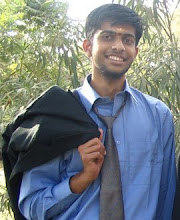Authors:
Michael F. Deering
Summary:
Goal: Building an application that applies the Virtual reality technologies in simple 3D drawing and animation tool
Previous technologies: 2D mouse has 2DOF in a interaction space which requires 6DOF movement. HMD, during the time when the system was made, had lower visual resolution. Novelty in the Holosketch is the introduction of 6DOF of hand input device. Holosketch uses a 20 inch CRT display, head tracking device (field sequential shutter glasses) and wand 6DOF virtual world manipulation tool.
Calibration: high accuracy position and orientation tracker for tracking head movements. Corrections are made for the distortions due to the curvature of the CRT as well as the index of refraction. The individuals interocular distance is used as calibration parameter, since based on the parameter the system corrects for changes due to rotation of the viewers eyes. Holosketch interaction techniques rely upon this high accuracy.
Menu design is based on the 3D consequences of Fitt's law, screen real estate cost and the position of the menu ( not interfering with the displayed object). The fade up pie menu is used to display the set of menus. The workspace fades out in the background. Right button of the wand is clicked and pressed to pop up the pie menu and released at the desired menu - to select the menu.
Drawing Features - Features include selecting and drawing primitive 3D shapes, drawing lines by pressing the left button of the wand and sweeping on the 3D space (leaves a toothpaste line with different thickness), 3D text typed using keyboard and imported geometric shapes. Drawing attributes if the shape can be changed. The most important of which is the Color. The application provides a RGB color cube to select the color from. The tip of the wand changes to a sphere showing the current color selection. As the wand moves through the cube, the color of the sphere changes. If the wand moves out of the color cube, the cube disappears.
Selection - Last object is the default selected object. Continuous color change/ blinking is used to show the selected object. Middle button click is used to select an object. Shift key + Middle button click is used to select multiple objects.
Editing - After an object is selected, the object can be moved, scaled, grouped and various other attributes (like point size of text) can be set. Squeeze buttons on the side are used to control the movement of the object. To prevent accidental trigger, key combinations are used. Control key for positional change, Ctrl + Shift for orientation change and Shift key for Position + Orientation change. Property sheets (Attributes menu item) of the object can be used to change the parameters.
Animation operations - Operations like Rotation, Solid movie looping , Color oscillation, Scaler, shifter and flight path can be done using the application.
Environmental variables like light source can also be controlled in the application. The viewpoint for the user can be changed by moving the head. To examine particular object, the user can select the object and rotate it with the wand. In the control mode (select from fade up menu), the entire virtual universe can be considered as an object. Depressing the left wand button changes the scale of the universe. The user can mark the particular user settings with a command and get back to the settings with another command.
User Study:
Single user, a traditional artist, used the system for a month. Holding one's hand in the air for long periods of time was not hard but making fine adjustments became difficult. A new mode was added - ability to draw 2 handed. Use 2d mouse as the lever and vary dynamically the radius of the toothpaste and simultaneously drawing with 3d wand.
Limitations - Geometry modelling and complex physics simulation to give more complexity to the animation and the virtual world. Optimal placement of menu buttons, choice of button colors has been secondary.
Discussion:
The user study analyzed the experience of a single user over the period of one month. It gives extensive and detailed data about the usability of the interface and the application. But the experience of a single user can not be generalized to other users. The user study was conducted on a computer/ traditional artist rather than a novice. The author claims the system will be easy to use for a novice.
The choice of a big 3D pie menu was confusing. The idea behind careful choice of menu interface was to not interfere with displaying the object being edited and occupying less real estate. The pie is flooded with all the menus and takes up the whole screen.
The interaction technique introduced by the system seems to be interesting.
Java 3D and Virtual Portal are projects extended from the concepts of Holosketch. Virtual portal as shown in the picture below contains 3 perpendicular wall with rear projection and head tracking display. this was used in automobile simulation. The 3 wall projection to provide the natural 3D interface is better than single flat display. CAVE, a VR system, extended this and had a floor projector to provide more natural 3D interface.

